SPEECH THERAPY
ESTABLISH SPEECH & LANGUAGE SKILLS FOR EFFECTIVE COMMUNICATION
ABOUT SPEECH THERAPY
Our speech therapists help children develop speech and language skills needed for effective communication. This is achieved through the evaluation and treatment of expressive and receptive language; speech production skills, including articulation, motor planning, and phonology; social skills; and dysfluency (stuttering). We also facilitate augmentative or alternate communication skills through use of a variety of communication alternatives including but not limited to high tech dynamic devices, mid-low tech devices, core boards and simple sign language.
We strive to assist your child in finding his or her voice. We never forget that a kid is a kid by ensuring speech therapy is fun, safe, and inviting. Our expectation: life-changing results.
OUR SPEECH SPECIALIZATIONS
- Speech/Language Disorders
- Receptive/Expressive Language Disorders
- Central Auditory Processing Disorders
- Language Processing Disorders
- Articulation/Phonological Disorders
- Social Communication/ Pragmatic Disorders
- Voice Disorders
- Fluency Disorders (Stuttering)
- Autism
- Apraxia
- Group Therapy
- Deaf/Hard of Hearing Services
- Sign Language
- Augmentative and Alternative Communication
-
Dysphagia
(Swallowing Disorders) - Oral-Motor/Feeding Concerns
WHAT OUR SPEECH THERAPY LOOKS LIKE
Evaluation
Speech Therapy begins with an evaluation from a Speech Therapist. At the conclusion of the evaluation, a verbal summary of findings and recommendations will be provided. Any parent questions or concerns will be addressed during this time, as well. A written report detailing evaluation results, recommendations and specific therapy goals will be completed within a 2 week period.
Sessions
Speech Therapy sessions are 1-on-1 and are 45 minutes in length. Our clinics are designed to be kid-friendly, our therapists have a unique way of meeting the child's goals while having fun. At the end of each session, a brief discussion with the parent related to session performance occurs.
Achieving Outcomes
Our therapists are overseen by Directors, who are highly respected, veteran therapists. Their job is to mentor therapists and ensure every child is achieving life-changing results.
EVERYTHING YOU NEED TO KNOW ABOUT SPEECH THERAPY
Why is Westside considered the best provider?
There are many reasons for having over 1,000+ pediatricians refer to us for services. The most important include our parents’ feedback and the provision of quality therapy services.
Every parent is sent a survey at the beginning, middle, and end of their therapy services. It asks: “On a scale of 1-10, how likely are you to refer your family or friends to Westside?”
Here is what parents say:
- Average Beginning Score: 9.71/10
- Average Middle Score: 9.83/10
- Average End Score: 9.89/10
This is exactly why Westside is deemed the best.
What does Speech Therapy cost?
While cost varies by insurance plan, number of therapy hours, and other factors, we still inform you on what you’ll expect to pay.
We have built a sophisticated cost calculator that looks at 19 factors that impact cost. When we run it, it shows you a week-by-week prediction of cost.
This estimate occurs after your evaluation once we know the frequency of therapy. All you do is provide us with your insurance plan details, and we handle the rest.
Which insurances do you accept?
We work with a wide variety of insurance companies and HMO networks. We are always expanding our network – click here to view the list of our currently accepted insurances.
How long will my child be in therapy?
Graduating kids from therapy is our goal. It means that we did our job and that the child’s communication difficulties have been addressed. We do everything we can to achieve progress as quickly as possible. There is ongoing communication between the family and the therapist about the child’s progress throughout the therapy process. When it is agreed that the concerns have been fully addressed, it is time to graduate AND celebrate!
Which age ranges do you treat?
At Westside, we generally treat children 0-18 years old. Our therapists are trained to work with kids, toddlers, and teens.
Similarly aged children typically come to therapy at the same time frames, too. For example, many of the teens come after-school and socialize with each other as a part of speech therapy.
How often will my child need therapy?
Most Speech Therapy treatment sessions occur 1-2 times per week in-clinic. Frequency of treatment sessions is determined by the clinical recommendation of the speech therapist and is based on each child’s individual needs.
Our therapists teach the parents and the child how to carry over the skills at home and facilitate generalization of skills in other environments. This complements the in-clinic treatment and leads to lasting change.
How long are Speech Therapy sessions?
Speech therapy evaluations are 60 minutes in length, and regular treatment sessions are 45 minutes long. The therapist will speak with the parent at the end of each session to provide a brief update on what was worked on. Often, outside exercises or practice ideas are provided at the conclusion, as well.
AUGMENTATIVE AND ALTERNATIVE COMMUNICATION (AAC)
Overview
Augmentative and alternative communication (AAC) is a term used to describe various methods of communication that can help people who have limited speech or who are unable to use verbal speech to communicate functionally. AAC can support both receptive language and expressive language skills.
Augmentative means to add to someone’s speech. Examples of that include waving, gestures/signing, pointing to pictures, and use of AAC devices.
Alternative means to use something other than speech. An example of that is using an AAC device. There are different types of devices that are used where children can point to pictures, or click buttons that give voice output, etc.
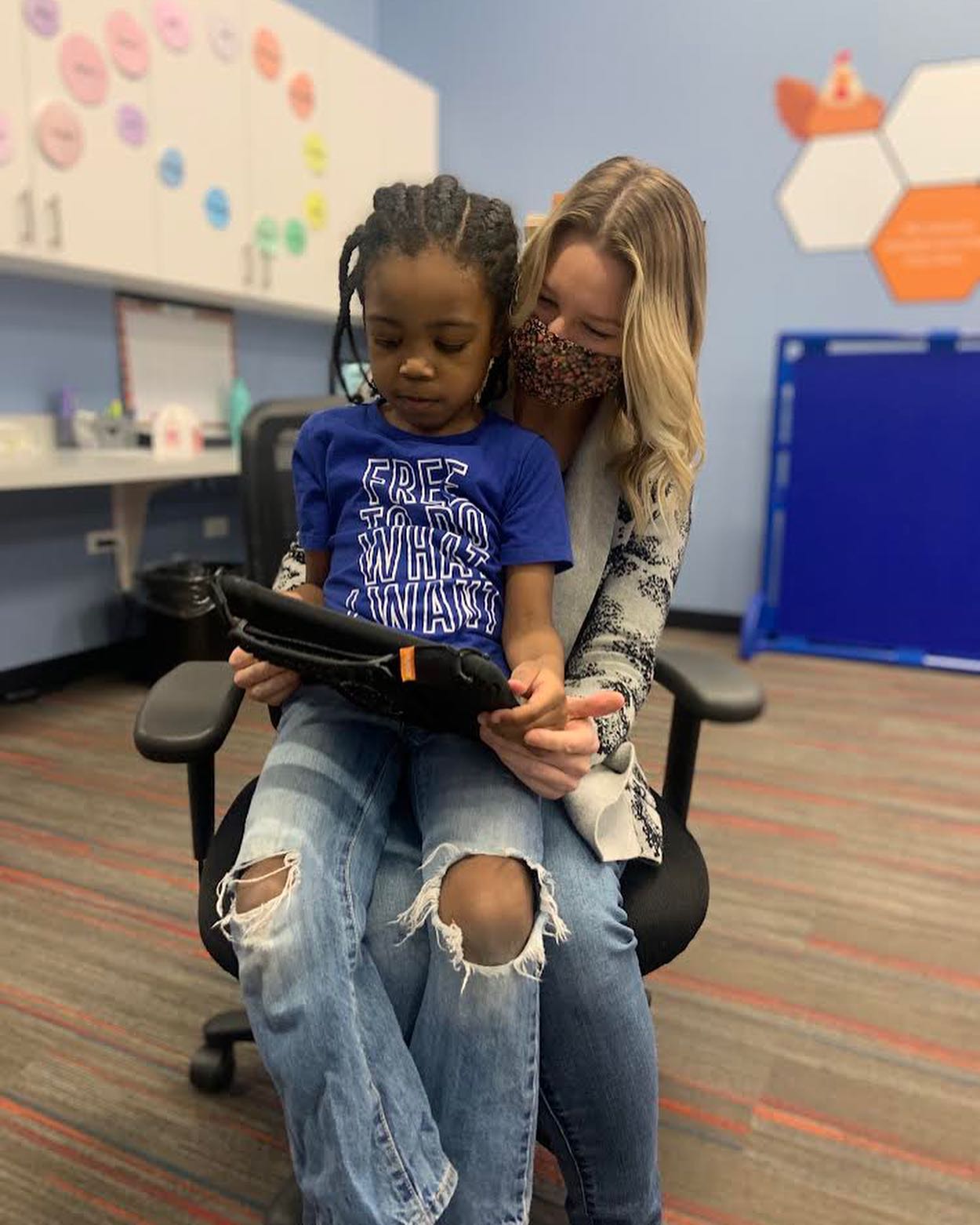
Type of AAC Devices
Simple communication devices can include simple picture books, PECS (Picture Exchange Communication Systems), picture boards, and basic recorded speech devices (Go Talk Communication Aid, BIGmack Communicator).
More advanced options include electronic tablet speech applications (examples: ProLoQuo2Go, Snap Core First utilized on an iPad). More advanced options also include dedicated speech devices that are devices that can only be used as a communication device (no other applications can be run on the device). These include devices by Tobii Dynavox and PRC-Saltillo
Since there are different types of devices a child can use, the evaluation process will help determine the child’s communication strengths and find the best fit for the child.
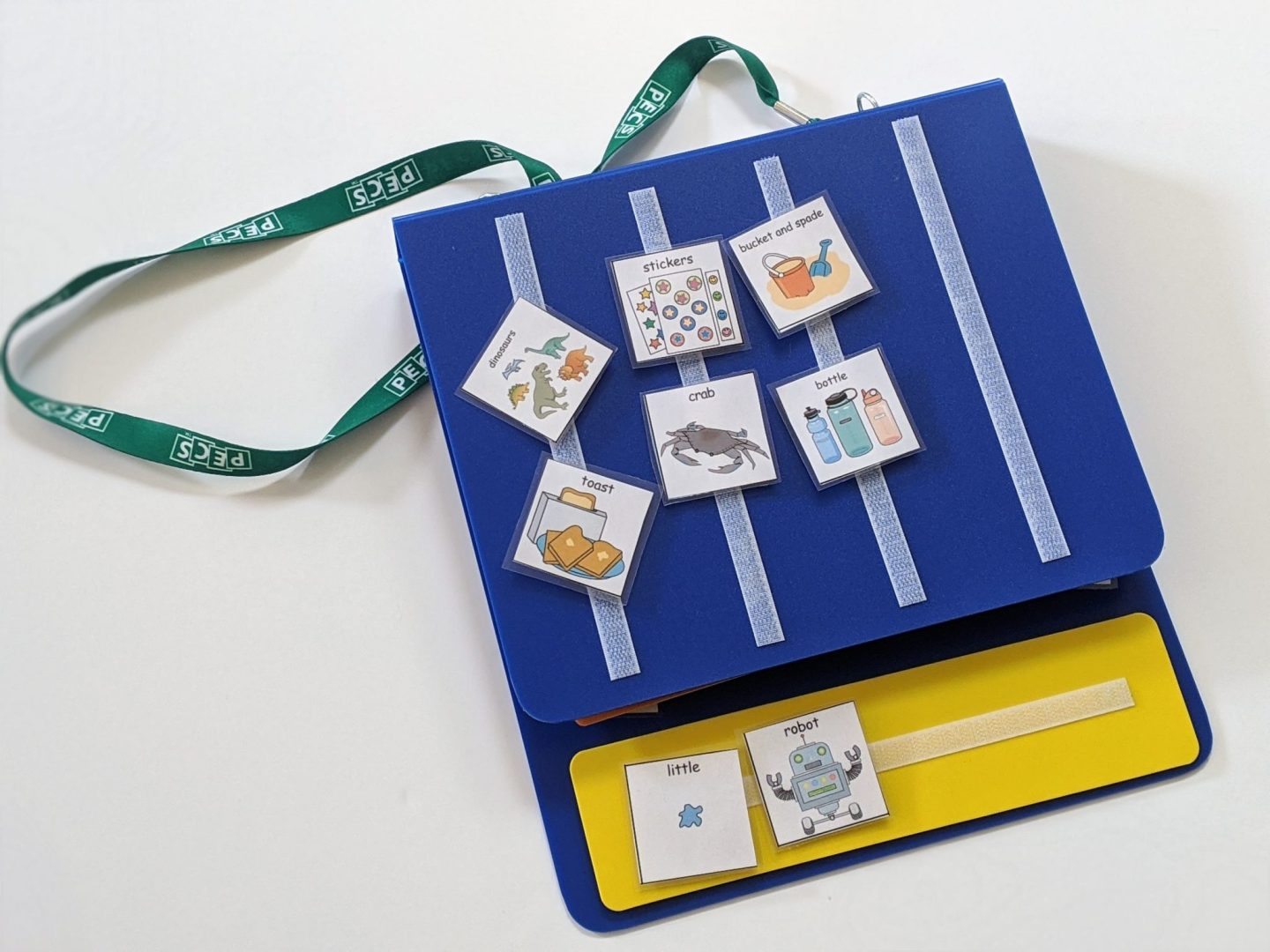
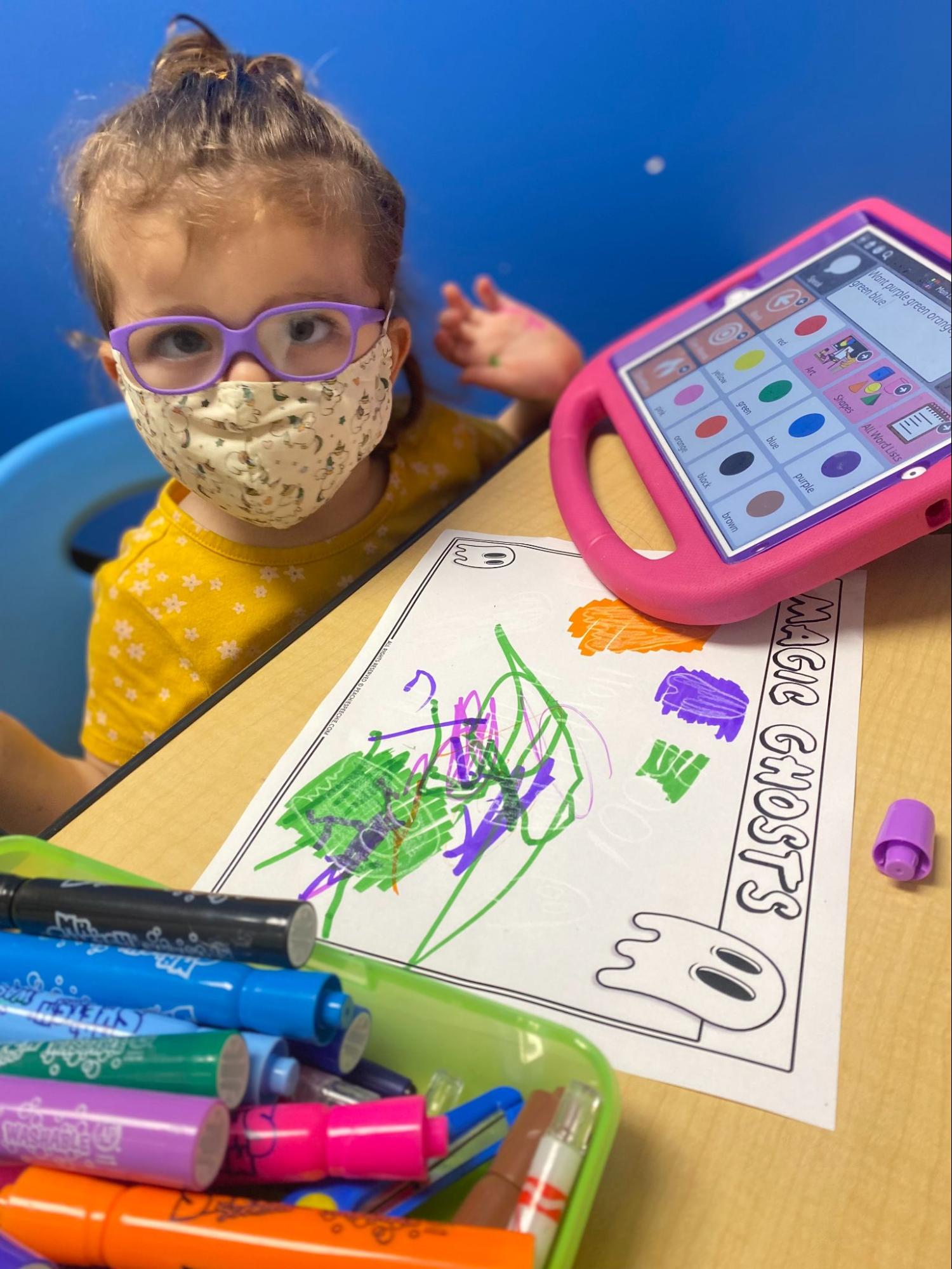
Benefits of AAC
AAC devices improve ability to functionally communicate with others. AAC devices also provide other therapeutic benefits. Simply using a device has been shown to improve language skills. Research results indicate that AAC interventions do not impede speech production. In fact, most studies report an increase in speech production.
AAC devices allow children to practice using their language in social and real-life situations, which is is essential for development, especially when verbal communication is challenging.
How to Know if AAC is Appropriate for Your Child
Your child might benefit from AAC if your child is not talking at all (beyond the age of 2), your child isn’t talking much (preschool or early elementary age), or your child is talking but it is extremely difficult for others to understand his/her speech.
Early communication intervention that incorporates AAC use can aid intentional communication behaviors in children.
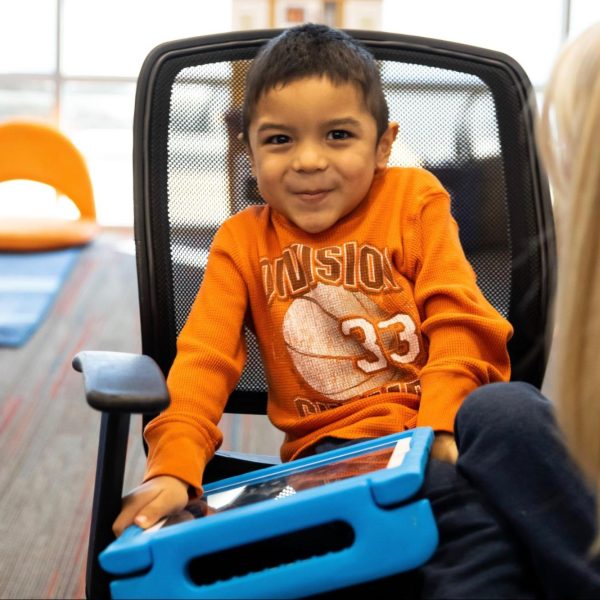
Prerequisites for Using a High-Tech AAC Device
There are no prerequisites for learning to use an AAC device, other than the ability to produce a purposeful movement. “All individuals should have access to AAC systems or devices that promote effective communication.” (ASHA)
In normal development, children learn meanings of first words by playing with sounds made in the mouth and seeing the reaction of others. Consistent motor movements result in consistent voice output that when integrated with social responses provides meaning to the word. A high-tech device with consistent motor patterns and voice output allows the non-speaking child to learn language in this same manner.
Learning to Use an AAC Device
It is different for every child. There will be times when a child is excited to use the device and there are times when there will likely be push-back to use it. Both of these times are a normal part of learning AAC and it is important that family and team members keep modeling vocabulary, showing enthusiasm about communication, and having the device available for use.
Modeling using an AAC can be similar to modeling on how to use verbal communication. A child can learn by seeing their family using the device to request, express emotion, ask questions, etc.
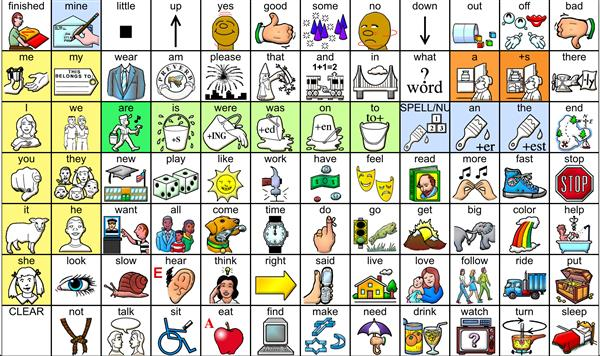
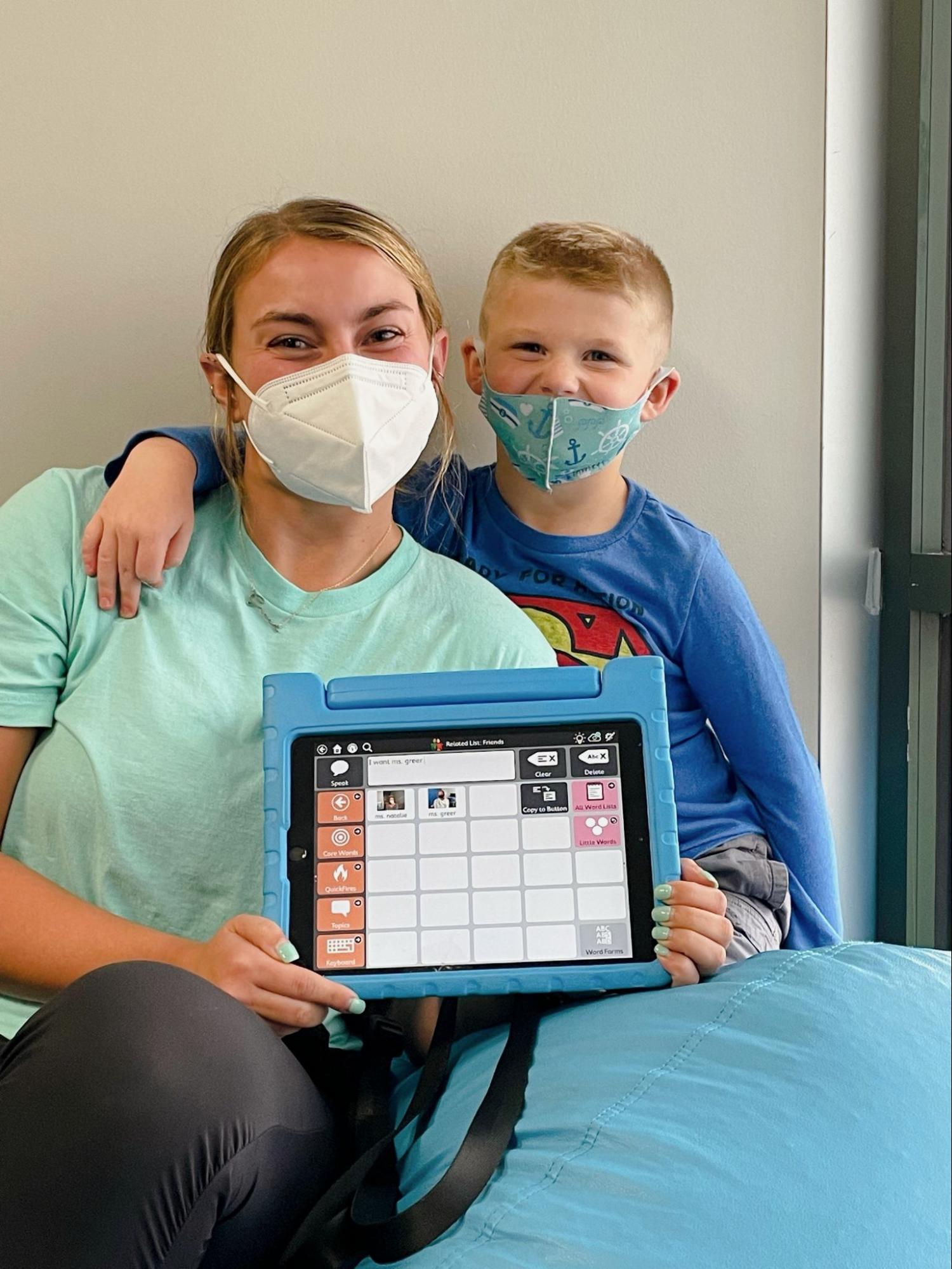
AAC Evaluation Process
AAC Evaluations are completed by licensed and certified speech language pathologists who are specifically trained in the area of AAC. The evaluation typically takes place during a 90 minute appointment. The goal is to determine what AAC supports are the most appropriate for an individual’s communication needs.
At the end of the evaluation, the therapists, child, and family spend time with each device, and at the end of the trial period, will decide which AAC is most appropriate. Key factors looked at include: motivation, communication autonomy, and communication efficiency.
Ongoing Speech Therapy
Ongoing therapy will be necessary following completion of the AAC assessment and gaining a device. In therapy, the speech language pathologist will model use of the device in a variety of situations. Opportunities will be set up for the child to use the device functionally. As therapy progresses, the goal is for the child to independently utilize the device for functional communication with a variety of conversational partners in a variety of settings (therapy, home, school, community). Therapy should also include family education which will provide guidance on how to become familiar with their child’s device, how to model use of the device, and ways to encourage the child’s attempts to use the device.
As a child progresses in their development and ability to use their AAC, more buttons or functions can be added to their device to keep increasing communication.
Getting Started With Speech Therapy
If you are interested, submit an inquiry below. Our Intake Team will call to help you determine a plan forward. If you are still unsure, you can call us anytime at (815) 469-1500 for more information.
